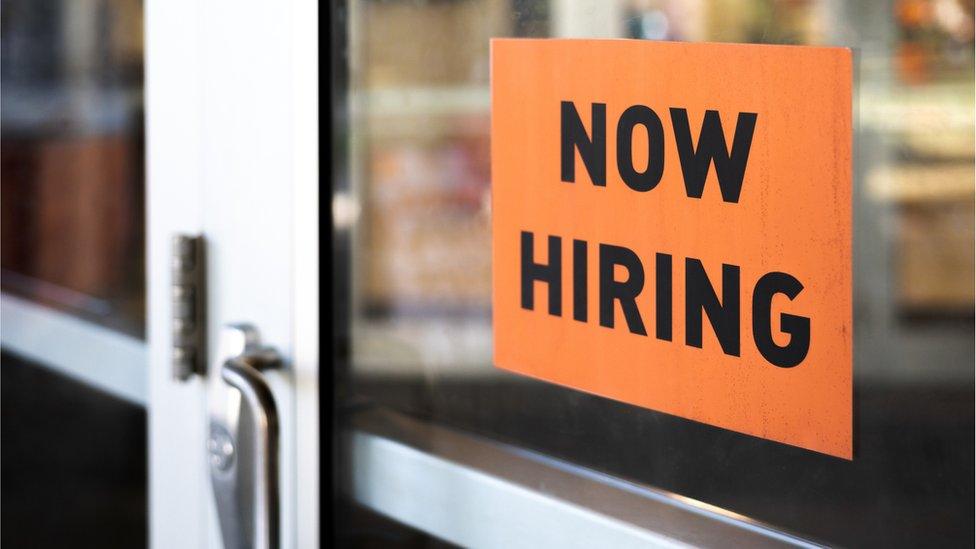NI unemployment rate three times official figure, study suggests
- Published

The Ulster University study suggests that the alternative "real rate" of unemployment is around 8%
The real rate of unemployment in Northern Ireland could be three times higher than the official measurement, analysis by Ulster University economists suggest.
The official unemployment rate is measured using an internationally agreed standard.
The current rate in Northern Ireland is just 2.6%, close to a record low.
The Ulster University study suggests that the alternative "real rate" of unemployment is about 8%.
That figure is reached by looking at the number of people who are "economically inactive" but who want to work and the number of people on government training schemes.
Someone is classed as economically inactive if they are not in work and not looking for work.
That includes people who are retired, in full-time education, sick or disabled and those with caring responsibilities.
'Hidden unemployed'
The data on economic inactivity is broken down to show how many of those people would like to work - a group the economists suggest could be seen as "the hidden unemployed".
There are currently almost 48,000 people in this "inactive but would like to work" group.
More than half of those are people who are economically inactive for reasons of sickness or disability.
When the 2,600 people on government training schemes are added to the "inactive but would like to work" grouping it sees the unemployment rate jump to 8.2%.
However, there is a note of caution about the difficulties the hidden unemployed find in trying to get back into the jobs market.

The study said that childcare interventions are 'important but not a silver bullet'
For example, the research shows that mothers with low levels of qualifications are much more likely to be inactive than those with higher qualifications so simply removing childcare barriers would not be sufficient.
The study said: "Childcare interventions are important but not a silver bullet for raising female labour force participation, and the impact on economic inactivity would be limited in the absence of supporting employability, skills and training interventions."
The research also applies the same "real unemployment" formula to the UK as whole and finds that the UK unemployment rate rises from about 4% to above 9%.
Northern Ireland currently has the lowest official unemployment rate but only the 4th lowest real rate, behind the South West, East and South East of England.
The North East of England has the highest real unemployment rate of more than 10%.
The researcher was carried out by economists Mark Magill, Marguerite Shannon and Sarah Perry.
Related topics
- Published13 February 2024

- Published14 November 2023
